In this clip, our cocotaxi driver, Emma, zips us (as if in a coconut shell on a motorcycle) over the river with my partner Trish and son Andy. A 15-minute ride with Emma cost about $5 (great for her, I’m sure, and fine for us). Three Americans in a coconut on wheels — that’s about the max.
Cuba’s Classic (and Not-So-Classic) Cars
Havana traffic is a mix of classic American cars (from before the Revolution), Russian Ladas (those infamous tin cans on four wheels, from the Soviet period — the 1960s to the 1980s), bicycle rickshaws, and cocotaxis (motorized tricycles with coconut-shaped carriages for tourists). We took them all.
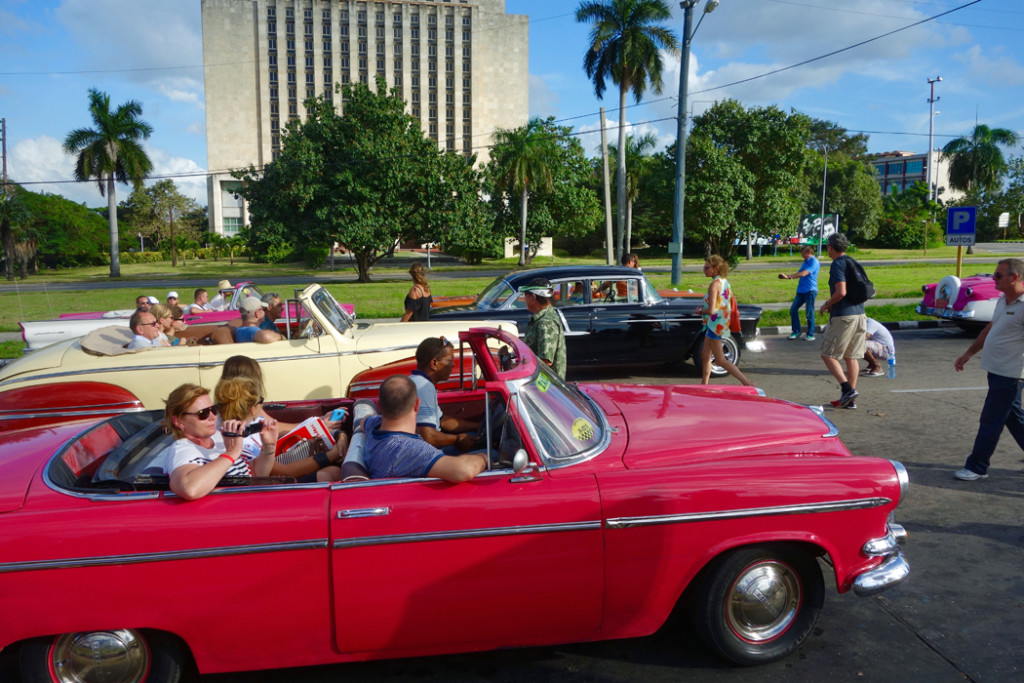
First impressions and shattered preconceptions are part of the joy of travel in Cuba. As expected, the streets of Cuba — while not congested — were like a Detroit car show, circa 1955. With flamboyant fins, lots of chrome, and gumball-machine colors, these cars provide basic personal transportation and touristy taxi service. The classic American cars date from before the American embargo was established in 1960. After half a century of heavy use and not quite dodging potholes, and with no access to replacement parts, they’ve generally been entirely refitted under the hood and artfully MacGyvered. That 1956 Dodge is likely a “hybrid”…with a 1985 Lada engine.
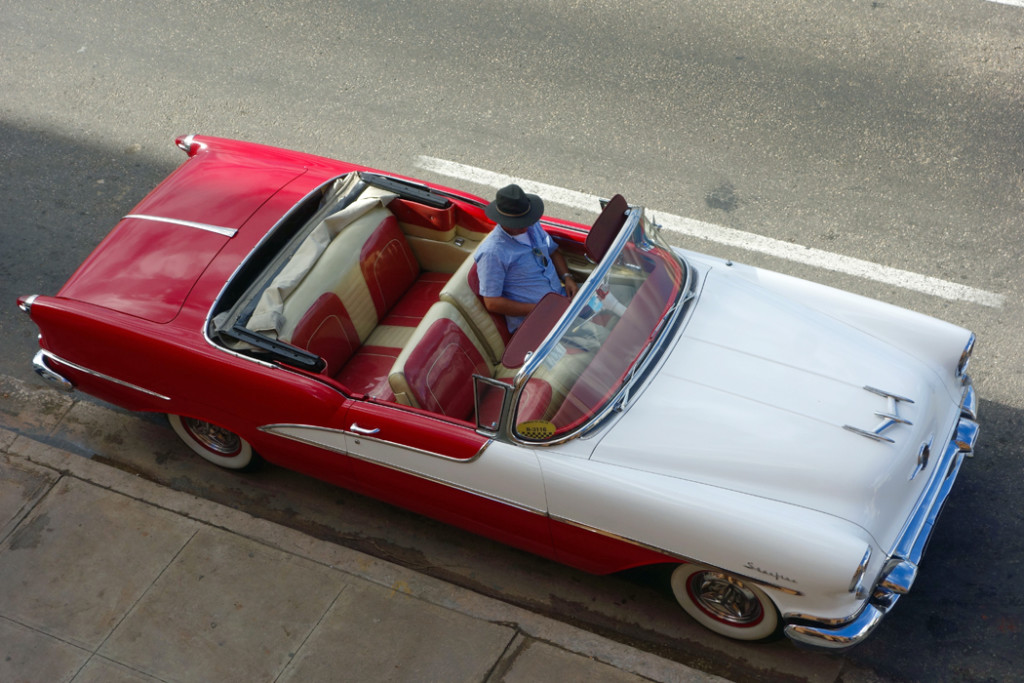
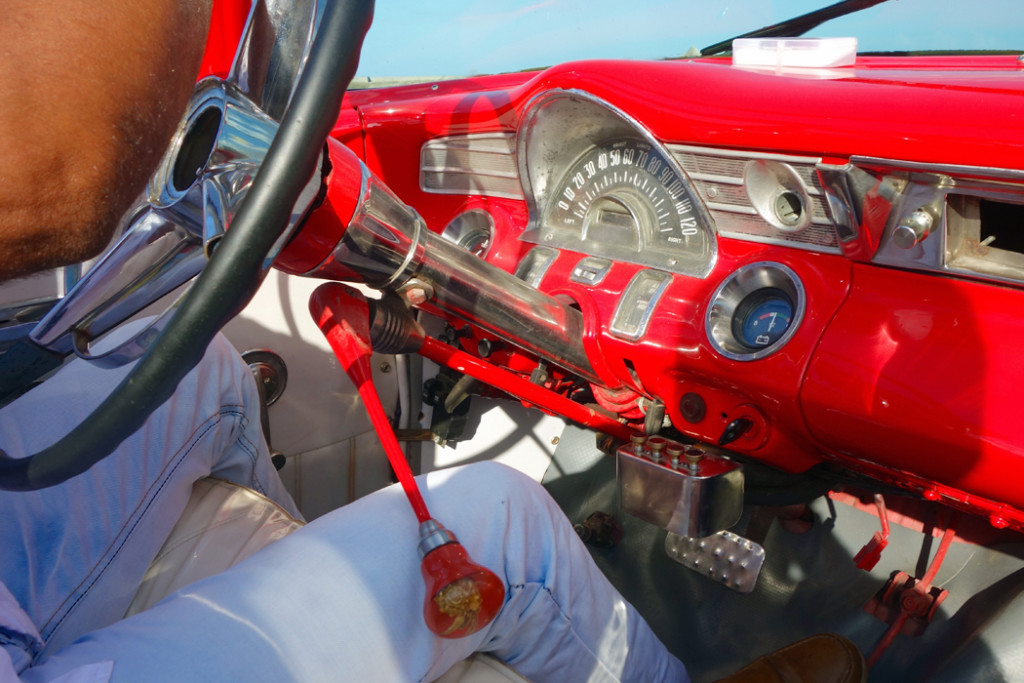
In Havana, it seems any guy with a classic American car has polished its chrome and painted its fins to take the foreign tourist for a glamorous ride through a decaying city on the cusp of great change.
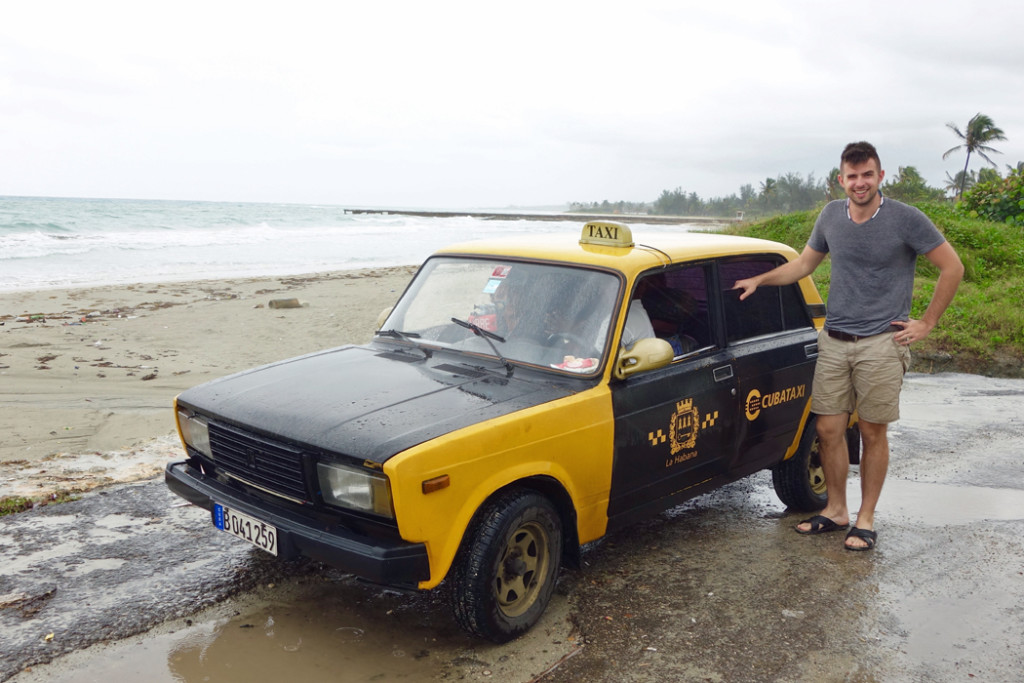
Basic taxis are often Soviet-era Ladas — a legacy of Cuba’s decades of partnership with the USSR. While tourists love the classic American cars, I found Lada taxis more practical — about half the price, and with less aggressive drivers.
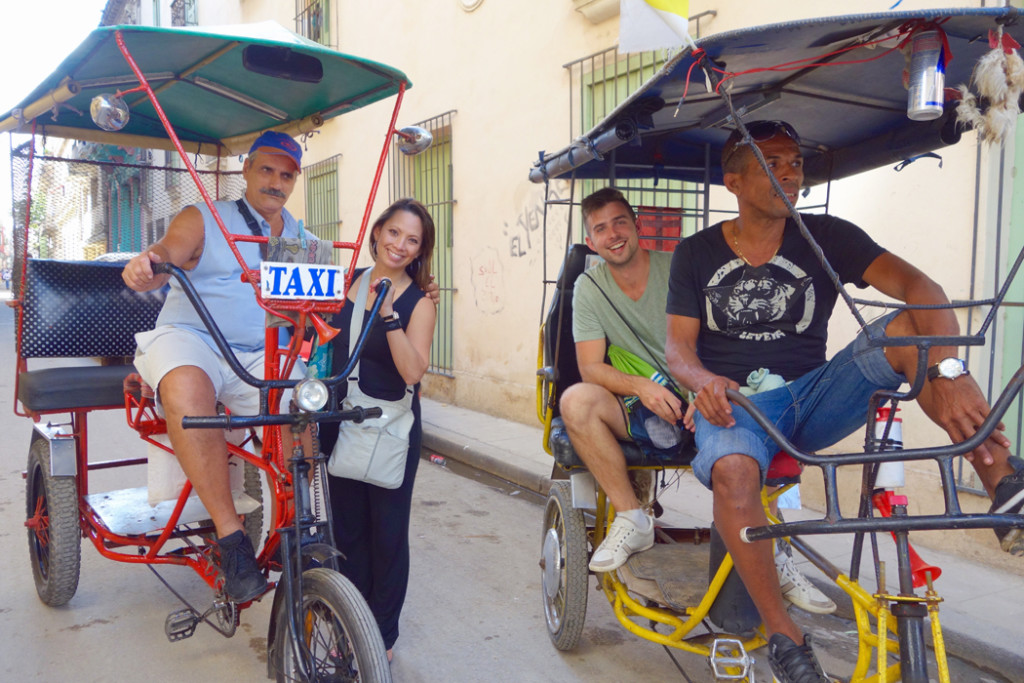
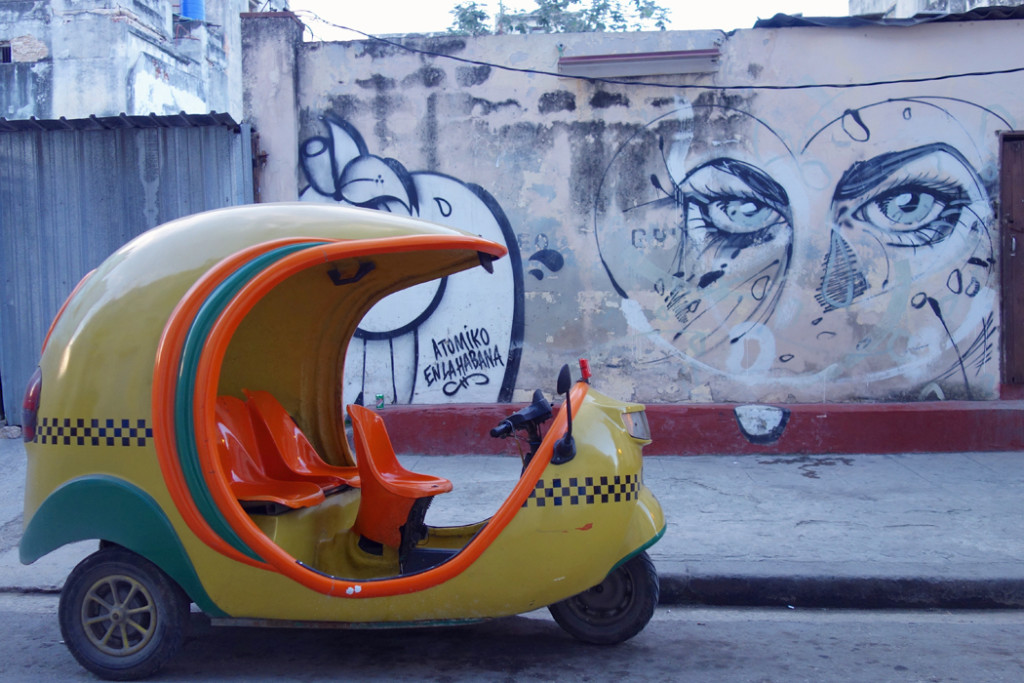
Photo: The Travelphile
For a memorable lift, tourists can hail a bicycle taxi or a “cocotaxi” — which fits three in a pinch and rattles between the traffic in a motorcycle-propelled carriage that feels like a coconut shell.
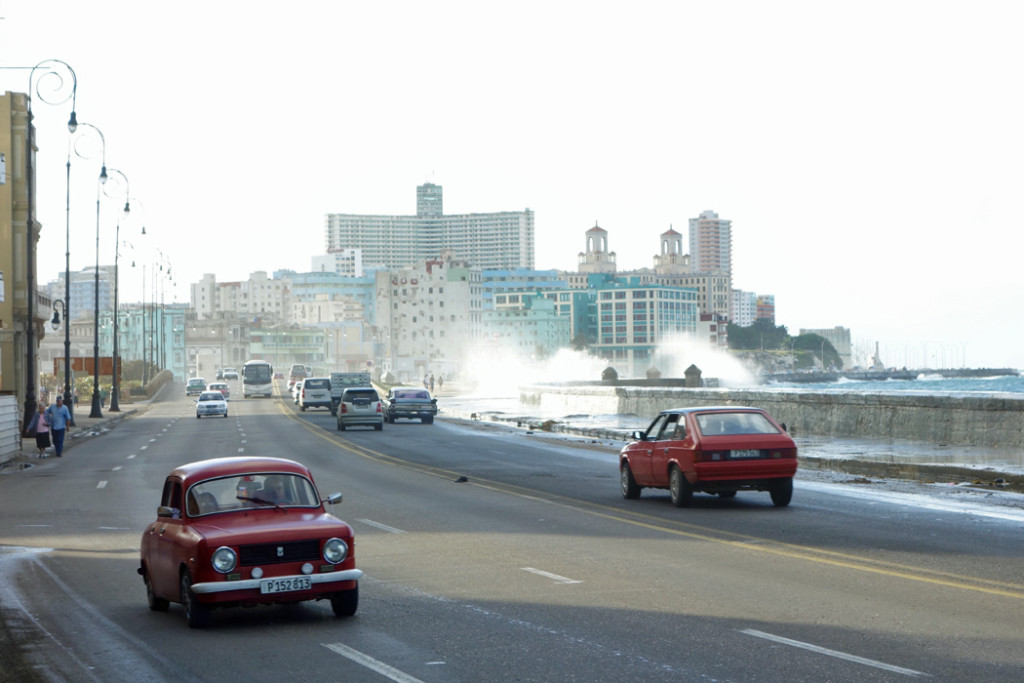
With a little wind, the surf’s up along Havana’s harborfront — and the main drag (Malecón) is closed for traffic. Owners of those classic cars understand how bad the salt spray is for their complexion.
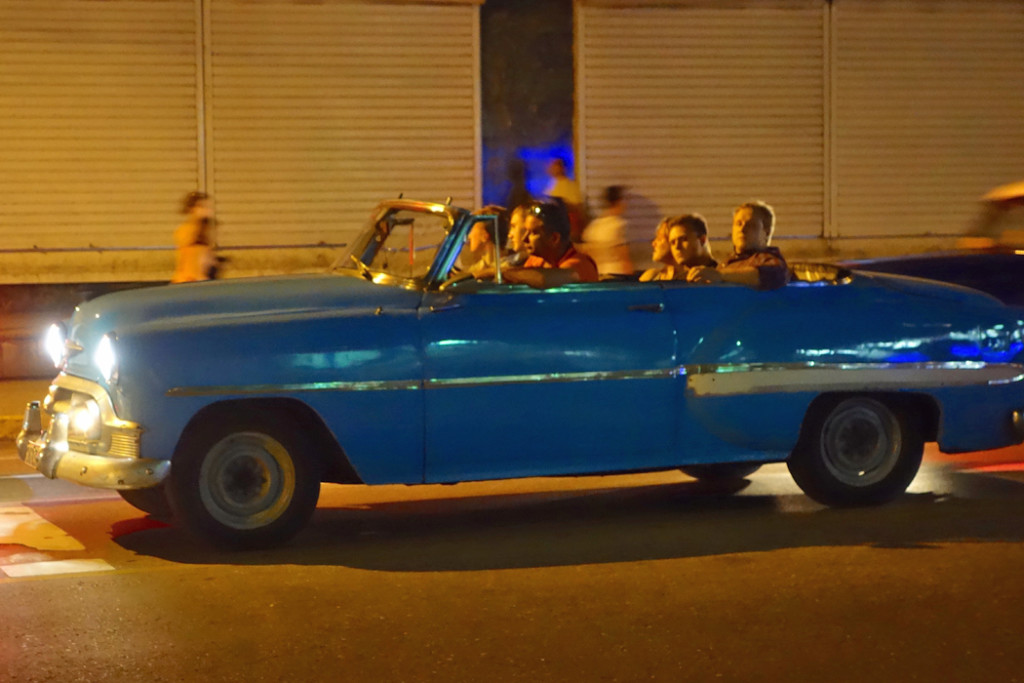
While Cuba’s classic 1950s-era American cars are fun to see any time of day, by night the glint of 60-year-old chrome gives the scene a time-passed elegance. Havana comes to life in the cool of the evening. Friends gather on curbs and on bannisters to party — pouring from $3 bottles of fine rum and enjoying music. Salsa is the beat of the city. Lovers catch an intimate moment, as public displays of affection are a reminder that living quarters can be cramped, with many generations under one roof.
Tourism in Havana
Havana Vieja (Old Havana) is polished, nicely cobbled, and touristy. Rather than beggars, you find jaunty old men with giant cigars eager to pose for a dollar. Rather than begging, panhandlers find an excuse to make business. The old center is built around five Colonial Age plazas. The most historic square, Plaza de Armas, celebrates the founding of the city in 1519. These squares are decorated with modern art and ringed by inviting bars with tables spilling out onto the cobbles. Signs and furniture feel like everything just opened up last year (which is often the case). This is the tourist-friendly zone — appealing and fun, but not giving an honest look at the character and economic metabolism of Havana.





As is the case in many developing countries, Western tourists gather in the most Western-friendly hotel, where they can get online, arrange tours, enjoy food that feels safe to eat, and interact with well-dressed, English-speaking locals. The Hotel Inglaterra, across the street from the iconic capitol building, is the favorite — constantly filled with tourists struggling to catch a little of the fleeting local Wi-Fi.

Our guide walked us to the obvious tourist attractions, which included colorful Afro-Cuban culture expressed by joyful dancing and religious sects that mix Christianity with African religions that came over with the slaves.

Tourism is ramping up in Havana, and in a few major stops in Cuba beyond the capital city. This hop-on, hop-off bus tour ($5 for a two-hour loop with a live guide, runs three per hour) is like any you’d find in Europe — but at a fifth the price.
My TV Fans Show Up in the Most Surprising Places
As a TV producer and host, I love it when I stumble into our show — and its fans — as I travel around our own country.
Flying American Airlines to Chicago last week, my partner Trish found this extremely entertaining in-flight programming.
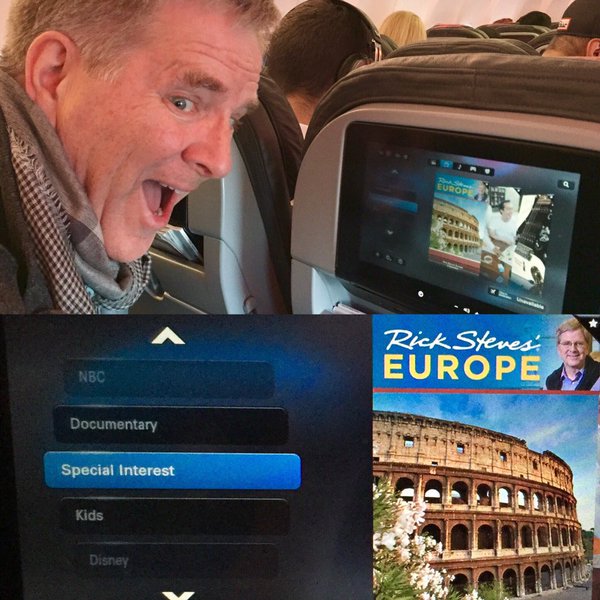
Image: The Travelphile
At the travel show the next day, two of the cutest little girls I’ve even seen dropped by our booth with their parents and invited me home for popcorn and to watch my show (as they do each weekend).
And while I was getting my colonoscopy, the doctor couldn’t stop raving about my show. After he administered my anesthesia, I was lying in the hospital bed cloaked only in a skimpy robe. He asked me to roll over, and all I remember was him saying, “So, my wife and I are going to Paris next month. We’re staying on the Left…” I woke up with a clean bill of colon health.
Happy Travels!
Blockade, Bureaucracy, and Groceries
During my time in Cuba, I encountered no animosity toward Americans. There are plenty of pro-Revolution billboards, but no anti-USA or anti-Imperialism messages. A few posters were anti-US embargo, and one person said, after learning that I was American, “Oh, you start the wars.” But mostly I heard one predictable refrain: We Cubans love the American people. (Another added, “And if we don’t get our American movie at the theater each week, we complain loudly.”)
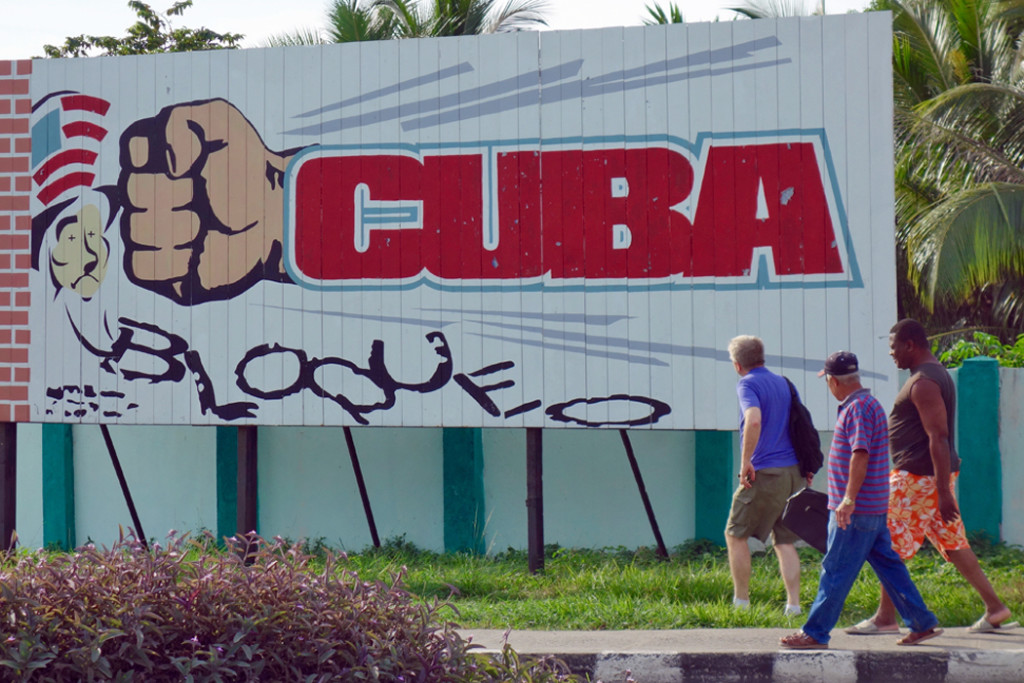
Photo: The Travelphile
Bureaucracy in Cuba is maddening — especially without computers. It takes half an hour (with fancy papers to fill out in duplicate and passports to photocopy) to buy a simple SIM card for your phone. At the bank, a policeman lets people in a few at a time as customers leave. Then, at the counter, the teller holds each $20 bill up to the window to check for tears and watermarks.
A tenet of the Revolution has always been that everyone should own their own home. But to protect workers from tycoons who might amass lots of real estate, there has been no sale of property. The notion of real estate sales is just starting, and mortgages remain a foreign concept. As getting wealthy is discouraged, if you have lots of money, you’re wise to stow it safely at home rather than in the bank.
Regular Cubans shop at street markets, at carts in the street, and at places where food rations are distributed. Grocery stores are for those with more money — as the prices here are not that much different from in the USA. Still, a stroll through a grocery store gives a fascinating insight into a society without a free market, where advertising is discouraged, and where supply and demand are often ignored.
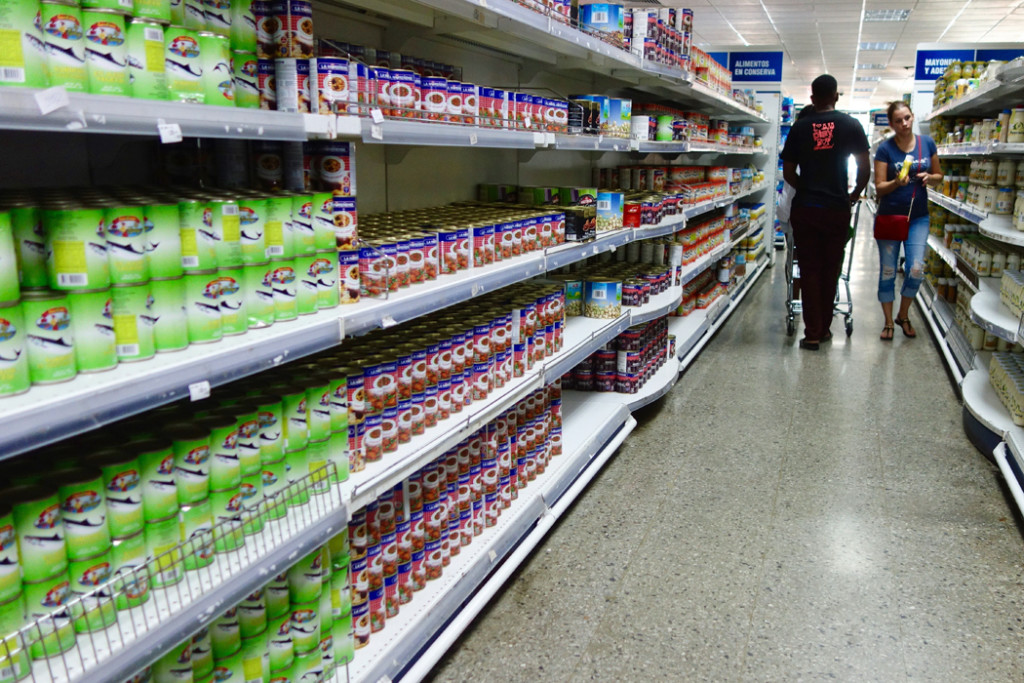
The store reminded me of similar stores in the USSR 30 years ago: almost no variety…just long rows of very basic products with labels seemingly produced by some tasteless government bureaucrat. Milk was milk — there wasn’t a hint of any varieties of milk.
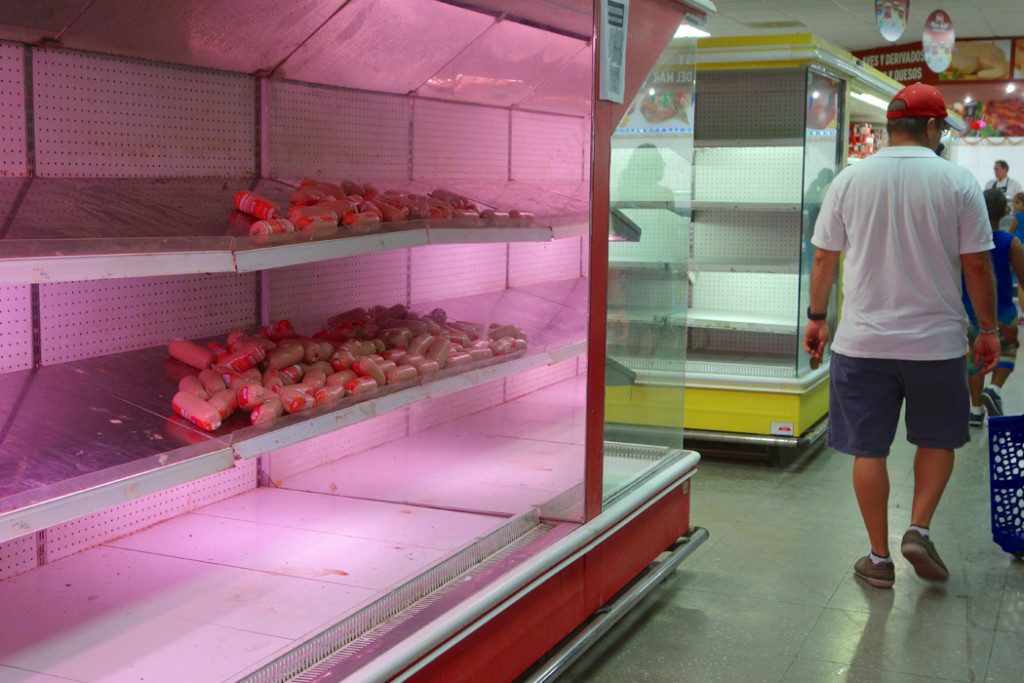
The meat section consisted of long, empty shelves, with just a few baloney sausages at the end.

The cereal lane had four different brands, each more sugary than Lucky Charms.
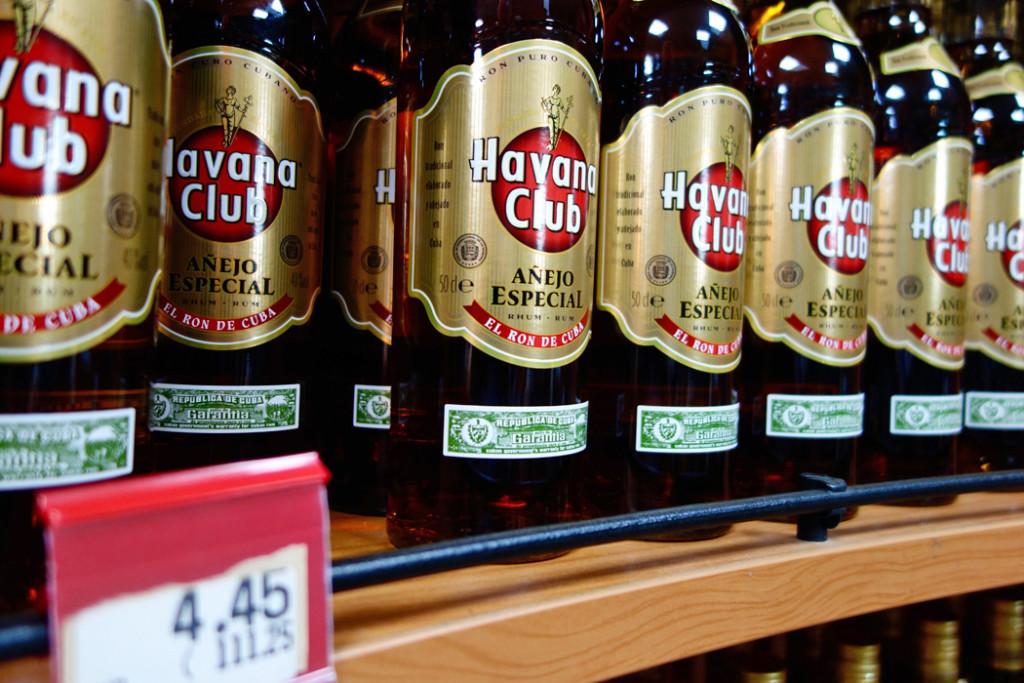
The only impressive selection was in the liquor corner, where rum was plentiful, varied, and cheap (at $5 for a top-end bottle).